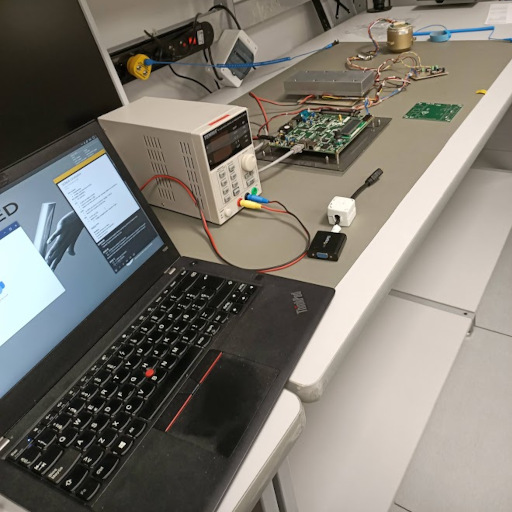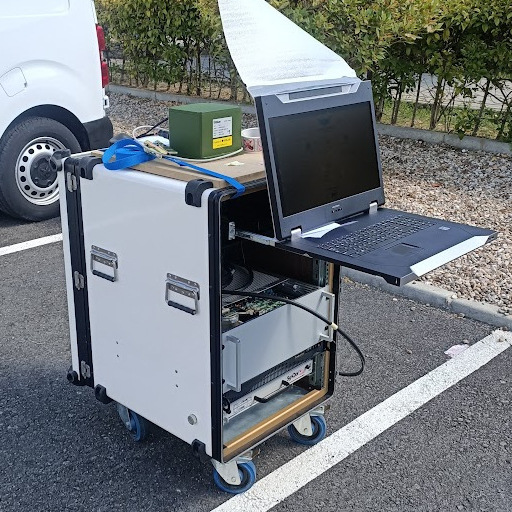SENDA: Navigation System for Spanish F-110 Frigates
The SENDA navigation system is GMV’s advanced navigation and time reference solution for naval systems. SENDA offers multi-constellation satellite navigation, integrating both military and civilian signals, with robust navigation support even in GNSS-denied environments.
During my time at GMV, I actively contributed to the development of the SENDA system, showcasing my commitment to quality, collaboration, and proactive problem-solving. My role evolved from maintaining tests and code to leading complex projects, consistently focusing on best practices and effective team communication.
First Steps in SENDA: Strengthening Unit Testing
Initially, I was responsible for maintaining and enhancing Google Tests for aerolib, an internal library managing aeronautical mathematics functions (3D vectors, matrices, quaternions). Instead of merely following instructions, I took a proactive approach by improving the unit testing strategy. I introduced automated tests and random test cases to catch edge scenarios, particularly in floating-point operations, ensuring the robustness and stability of the library.
My contributions went beyond the expected, as I collaborated closely with the testing team to refine numerical accuracy thresholds, ensuring that our results met the strict security and reliability standards required by the project.
Leading the SENDA Recorder Development
After demonstrating solid technical skills, I was given the responsibility of leading the design and development of the SENDA Recorder system. This subsystem was essential for capturing raw navigation data from multiple GNSS devices and auxiliary systems (such as IMU, INS), for the Hespérides (A-33) research vessel. This task encompassed both hardware and software integration, and I ensured the success of this project through strong leadership and technical proficiency.

Hardware Integration and Setup
I oversaw the installation and configuration of devices using communication protocols such as RS-232, RS-422, and Ethernet. I also installed PCI boards, including a GPIO module and additional network interfaces, ensuring seamless hardware integration. In addition, I configured the system with an Uninterruptible Power Supply (UPS) to maintain high availability, thus protecting against data loss.
Through effective collaboration and diligent validation, I ensured that the system worked smoothly at the hardware level, validating and verifying every component to ensure it functioned as expected.
Software Development and Real-Time Recording
On the software side, I developed new device drivers to handle communication with GNSS devices and created a record-replay module that could store raw binary messages for later playback. This was essential for testing and ensuring the integrity of recorded data.
To validate the system, I organized and conducted field tests where the SENDA Recorder was mounted in a van. These tests confirmed that the system recorded the data accurately and in the correct format, ensuring that it could perform reliably when deployed on naval vessels.

Solving Challenges with Reverse Engineering
One of the most complex challenges I faced was integrating a poorly documented device. The limited information available required me to use reverse engineering techniques to decode the messages it transmitted. By employing tools such as an oscilloscope and through a methodical trial-and-error approach, I was able to analyze the device’s communication patterns.
After uncovering discrepancies in the device’s message structure, specifically in the checksum calculations, I worked closely with the device provider. I documented the issue in detail, including traces and error logs, and presented my findings. My proactive communication resulted in the provider acknowledging the bug and issuing a firmware update that resolved the issue. This experience not only strengthened my technical skills but also demonstrated my ability to communicate effectively with external stakeholders and solve problems under pressure.
Conclusion: Growth Through Proactivity, Leadership, and Quality
My time working on the SENDA project at GMV allowed me to hone my technical skills and grow as a leader. Throughout the project, I emphasized:
- Proactivity, by consistently seeking ways to improve processes and enhance the quality of work.
- A commitment to best practices, ensuring maintainable, scalable, and high-quality software and hardware integration.
- Leadership in guiding both the technical and organizational aspects of the project, from system design to final implementation.
- Strong collaboration and communication skills, both within the team and with external partners.
This experience solidified my approach to complex problem-solving and reinforced the value of combining technical expertise with effective teamwork and communication.